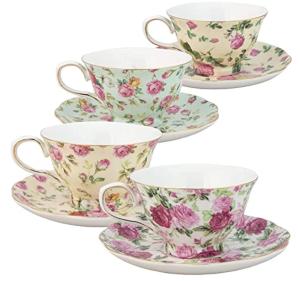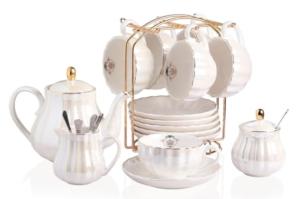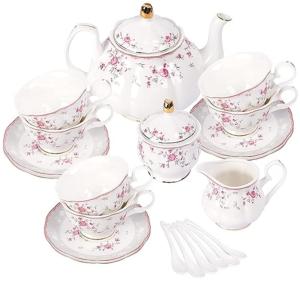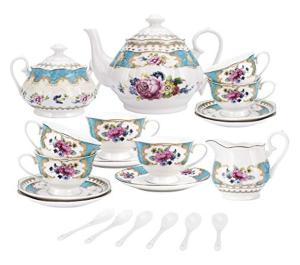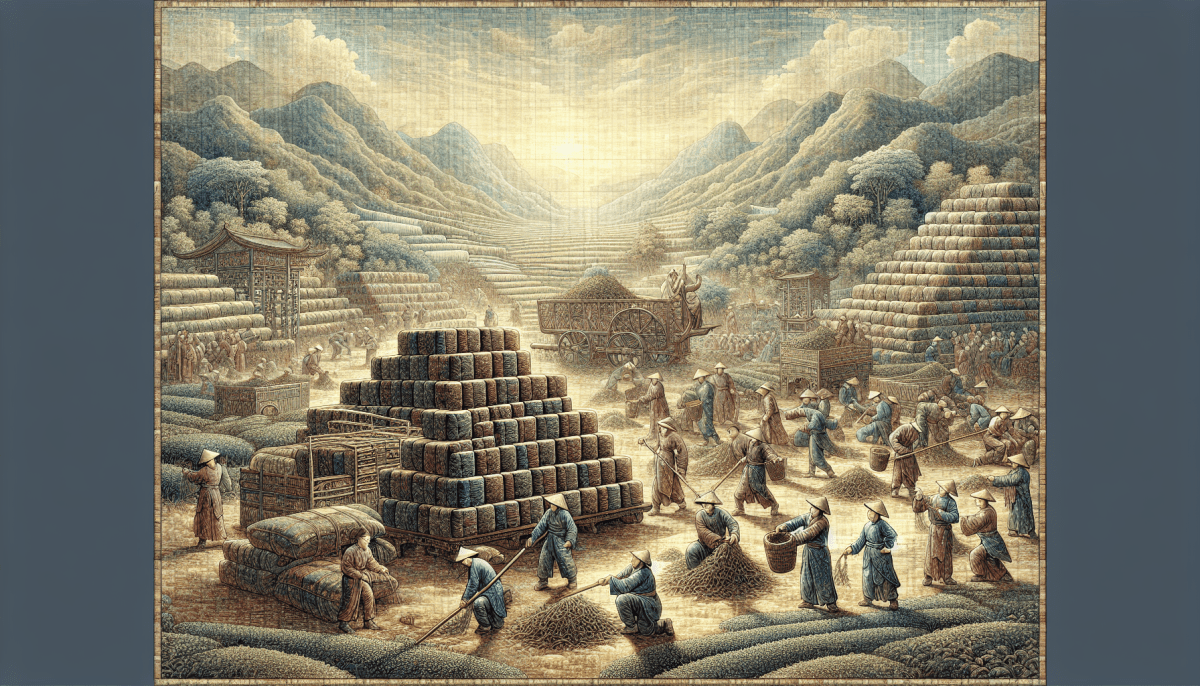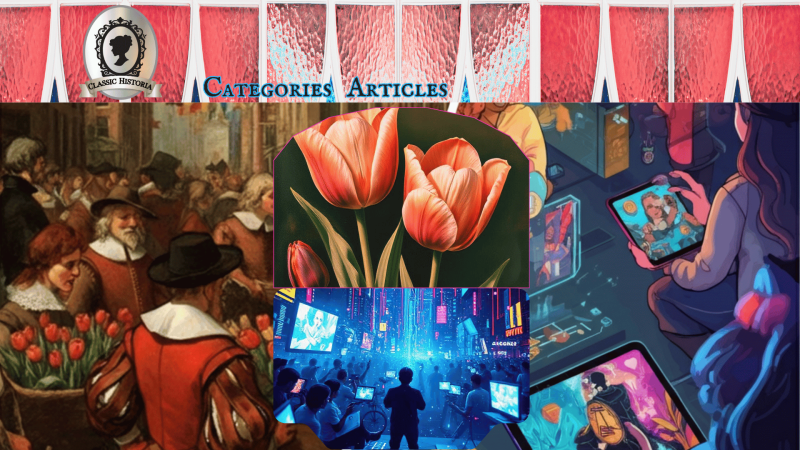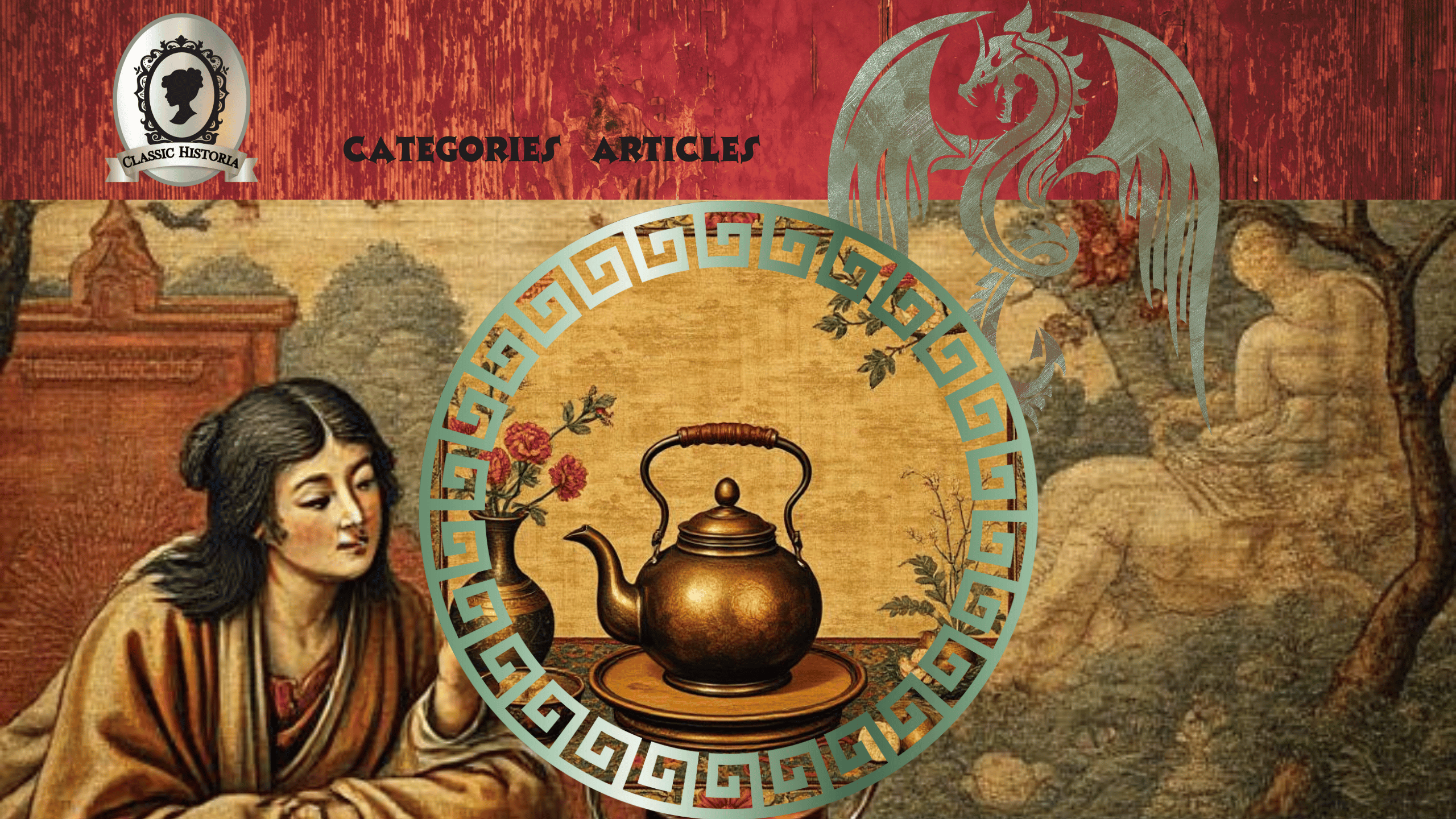
Classic Historia may receive a commission on purchases made through Amazon and eBay affiliate links at no additional cost to you.
The rich history of tea has long held a central role in cultures across the world, particularly in China, where its history extends back thousands of years. One of the most fascinating legacies of tea culture is the invention of tea bricks. These compressed blocks of tea not only served as a method of preservation and transportation but also carried significant cultural, economic, and historical value. Understanding the importance of Chinese tea bricks requires a look into their origins, uses, and enduring impact on global tea culture.
History of Tea Bricks
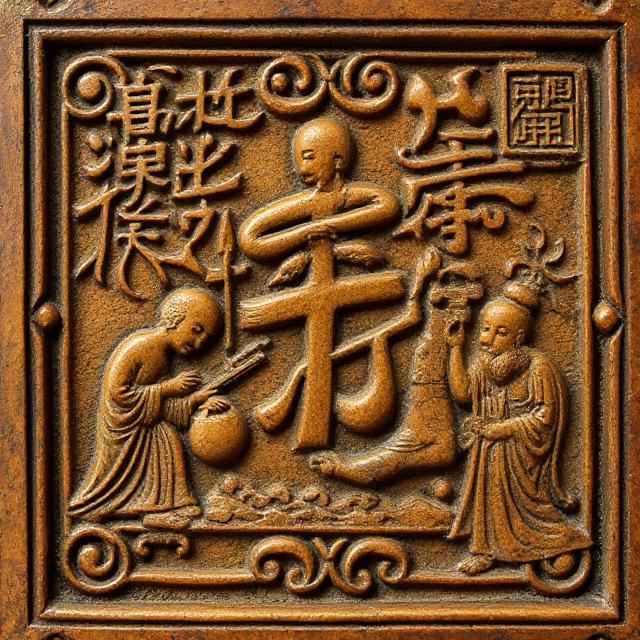
The concept of compressing tea into bricks is thought to date back to the Tang Dynasty (618-907 CE), a time when tea became a cultural and commercial commodity. While loose-leaf tea was common, transporting large quantities across vast distances was often impractical due to space and preservation issues. To address this, tea leaves were steamed, compacted, and molded into solid bricks. This process made it easier to transport tea along trade routes, including the famous Silk Road, and ensured the tea remained fresh for extended periods.
Tea bricks gained even greater popularity during the Song Dynasty (960–1279 CE), when they were refined and became more widely used. Not only were they sought after for their utility, but they also became a form of currency in certain regions, reflecting their deep integration into the economy and society of the time.
Interesting Facts
Pu-erh tea is a fascinating variety known for its special fermentation process, which enhances its flavor and value over time, much like fine wine. Originating from China's Yunnan province, this tea undergoes a drying process, giving it a distinctive, earthy, rich taste that deepens as it ages. Beyond its complex flavors, pu-erh is celebrated for its overall quality of health benefits, including aiding digestion and supporting heart health. Steeped in cultural heritage collections, it holds significant cultural importance, often gifted or shared during special occasions as a symbol of respect and warmth. With its rich history and timeless appeal, pu-erh tea continues to captivate tea enthusiasts around the world.
The Multi-Faceted Uses of Tea Bricks
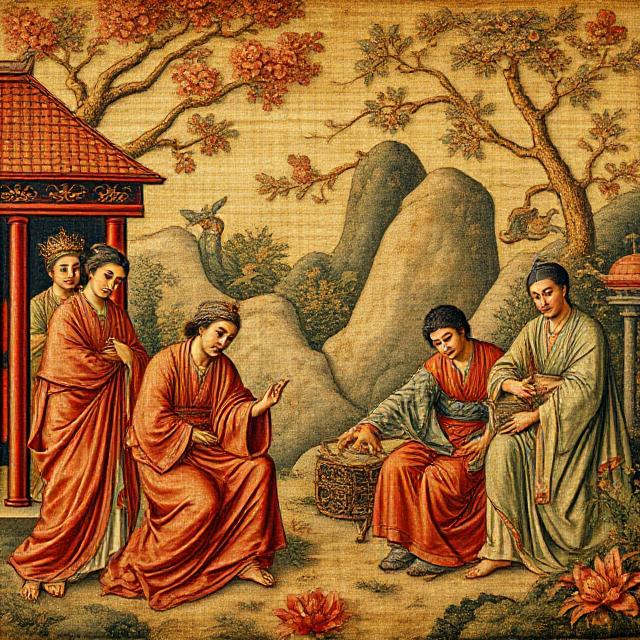
The innovation of block form tea went beyond mere convenience. These compressed tea blocks have multiple purposes, ranging from practical tea drinking to a form of edible currency. Their uses can be categorized into three primary areas:
A Staple for Trade and Commerce
Tea bricks held immense commercial value, often functioning as a form of currency in areas where coins and paper money were scarce. Particularly in regions of Central Asia, Mongolia, Tibet, and China, tea bricks were highly prized and traded for goods like silk, horses, and other necessities. This dual purpose as both a consumable product and a medium of exchange illustrates the central role of tea in the economic life of ancient China and its neighboring regions.
Culinary and Medicinal Applications
Bricks of tea were traditionally consumed by breaking off pieces and brewing the tea, but they were also incorporated into culinary and medicinal practices. In Tibetan and Mongolian cultures, for example, brick tea was used to prepare butter tea, a hearty beverage that provided energy in cold and high-altitude environments. Additionally, tea was lauded for its health benefits, with compressed tea bricks serving as a convenient way to store and distribute this treasured resource.
Cultural and Artistic Significance
During their peak use, tea bricks were also valued for their aesthetic qualities. The molds used to shape the bricks often featured intricate designs and inscriptions, such as floral patterns, religious symbols, or Chinese characters. These brick form elements highlighted the artistic craftsmanship of the time and reflected the cultural respect for tea as more than just a beverage, but a symbol of refinement and status.
The Role of Tea Bricks in Chinese Tea Culture
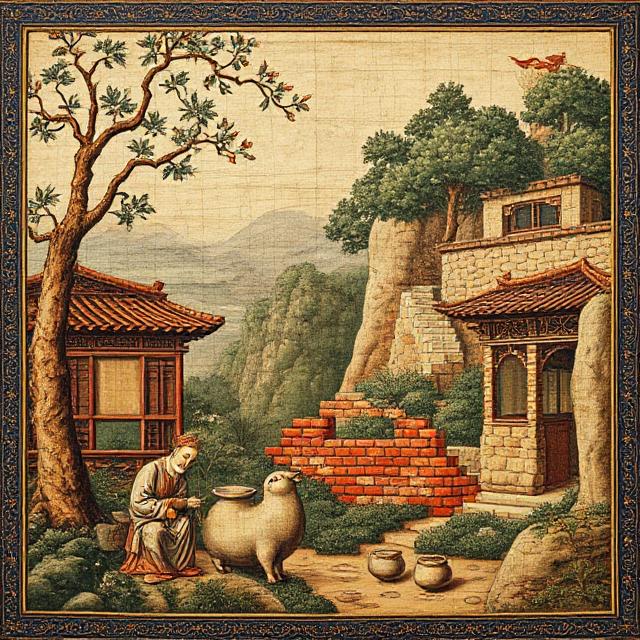
Tea bricks hold a pivotal place in Chinese tea culture, embodying both the practicality and the artistry associated with tea. Their production and use as a form of tea reveal much about the sociopolitical landscape of ancient China, as well as its relationship with neighboring countries. The practice of compressing tea into bricks fostered the international exchange of goods and ideas, bridging cultural gaps and promoting diplomacy.
The production methods of tea bricks also differed across regions, leading to a variety of styles and methods. For instance, some bricks were pressed from raw tea leaves, while others were made using aged, fermented leaves, resulting in a unique quality of the tea. These regional variations further enriched the diversity of tea culture, showcasing the adaptability of this ancient tradition.
Additionally, tea bricks played an integral role in the spread of tea culture worldwide. By facilitating trade with other nations, they introduced Chinese tea practices to new audiences, laying the foundation for tea traditions in countries like Japan, Korea, and beyond.
Interesting Facts
To consume tea bricks as food, people would often grind or crush the bricks into fine powder and mix them with other ingredients like barley, yak butter, or salt to create a nutrient-rich paste or soup. A well-known preparation is "tsampa," a Tibetan dish made by combining ground tea with roasted barley flour and butter, offering a hearty meal that provided much-needed energy in cold, high-altitude environments. The high concentration of antioxidants, minerals, and the slight caffeine content of Tibet pieces of tea also made it a practical choice for physical endurance during long journeys or labor-intensive work. This dual use of tea bricks underscores their importance as both a dietary staple and a cultural keystone in these regions.
The Decline and Legacy of Tea Bricks
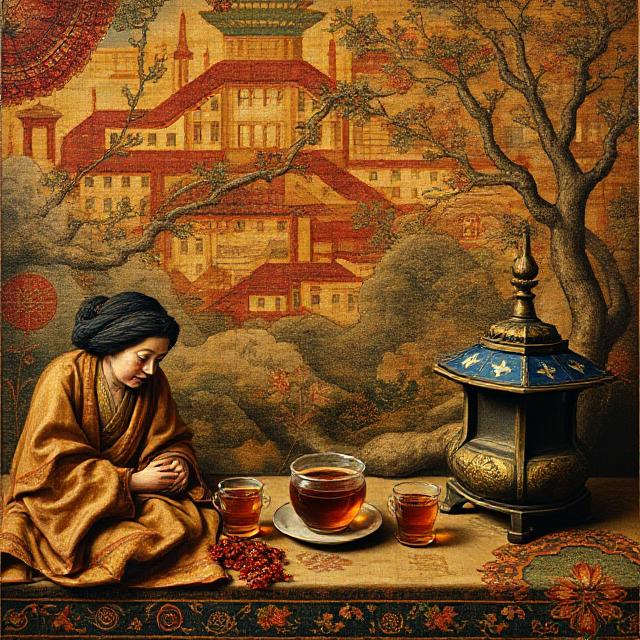
The prominence of tea bricks began to decline during the late Qing Dynasty (1644–1912) and into the modern era as loose-leaf tea and powdered tea gained popularity. Advances in transportation and packaging made it easier to store and ship tea in its natural form, reducing the demand for compressed bricks. Despite this decline, tea bricks are still produced today for tea enthusiasts and tourists seeking to experience the taste of history in a cup of tea.
The legacy of black tea bricks, however, remains alive. They serve as a reminder of tea's central role in shaping economics, culture, and diplomacy throughout Chinese history. Modern tea enthusiasts often find inspiration in these artifacts, building upon centuries of tradition to further refine the art of tea.
Reviving Interest in Tea Bricks
With the resurgence of interest in traditional methods, tea bricks have made a small but meaningful comeback in contemporary culture. Collectors and historians prize antique tea bricks for their historical and artistic value, while some tea artisans have reintroduced the practice of compressing tea into bricks as a nod to history.
Events, exhibitions, and tea ceremonies often showcase these cultural artifacts, educating modern audiences about their significance. This renewed appreciation underscores the timeless relevance of tea as a popular drink and its ability to connect people across generations and geographies.
Interesting Facts
Tea comes in fascinating forms, each offering a unique experience for tea lovers. Whole leaves are prized for their rich flavor and aroma, often delivering the purest essence of tea. Loose tea, on the other hand, allows for personalized brews, offering flexibility in strength and taste. Tea bags, loved for their convenience, have become a household staple, perfect for quick and easy brewing. For something more compact, tea cubes and hard bricks offer a blend of tradition and practicality, with hard bricks historically used for trading and long storage. Meanwhile, blooming floral teas provide a visual treat as they unfold in water, turning each cup into a mesmerizing piece of art as well as a delightful drink. Each form carries its charm, enhancing tea culture in its own special way.
Understanding Tea Bricks in Modern Times
For tea connoisseurs and historians alike, studying tea bricks offers a glimpse into a fascinating chapter of China's tea history. These compressed blocks are more than just functional innovations; they represent a convergence of art, commerce, and culture. They encapsulate the ingenuity of ancient societies and the global influence of Chinese tea culture.
Whether appreciating their historical significance, tasting the concentrated, unique flavors they offer, or marveling at their valuable commodity as currency centuries ago, tea bricks remain an enduring testament to the importance of tea in human history. By exploring their legacy, we cultivate a deeper understanding of the role tea has played—and continues to play—in shaping our world.
Like this article? Discover more at Classic Historia for a deeper exploration into the past that has shaped our world.
Stay connected with Classic Historia and discover more timeless treasures by following us on our social media platforms:
"With Classic Historia, you can find the perfect gift for any occasion or add a touch of nostalgia to your own home."
Business Phone Number:
(833) 222-7544
Business Address:
Classic Historia
1220 Oak Street, Suite J PMB1007
Bakersfield, CA 93304-1072
United States
